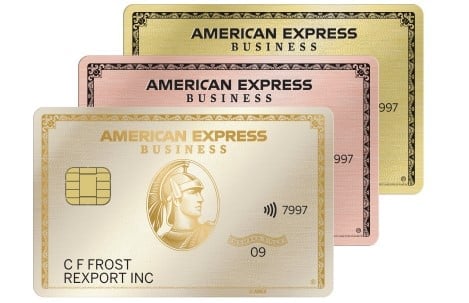How to Refinance a Business Loan
Refinancing can be a good option if your business can qualify for lower rates and save on borrowing costs — but it’s not right in every situation.

Many, or all, of the products featured on this page are from our advertising partners who compensate us when you take certain actions on our website or click to take an action on their website. However, this does not influence our evaluations. Our opinions are our own. Here is a list of our partners and here's how we make money.
Nerdy takeaways
Refinancing a business loan may help you save money on interest — especially if you have improved your business’s qualifications since receiving your original loan.
Bank loans, online loans and SBA loans can all be used to refinance business debt.
If you’re considering refinancing, start by setting a financing goal, understanding how much you owe and thoroughly comparing lenders.
Business loans can typically be refinanced, just like mortgages or other personal loans. When you refinance, you apply for a new small-business loan — ideally with more favorable rates and terms — in order to pay off your existing debt.
If you can save on borrowing costs, refinancing may be a good option for your business. Refinancing isn’t right for all situations, however, and could create a cycle of debt if you’re already struggling to make payments.
How much do you need?
We’ll start with a brief questionnaire to better understand the unique needs of your business.
Once we uncover your personalized matches, our team will consult you on the process moving forward.
What does it mean to refinance a business loan?
Refinancing a business loan involves applying for a new loan, from the same or a different lender, to pay off your existing debt. In general, the goal of refinancing is to save your business money and streamline cash flow.
Ideally, you should achieve this goal by refinancing to a loan with more desirable terms, such as:
Lower interest rates.
Lower monthly payments.
A longer repayment period.
Less frequent payments.
🤓 Nerdy Tip
In its September meeting, the Federal Reserve cut the base rate for federal funds for the first time since March 2020. This change makes it cheaper for banks and lenders to borrow money, and, in turn, may make it cheaper for borrowers to take out loans.
That means that if you’re considering refinancing your business loan, now may be a good time to start looking. The rate cut doesn’t guarantee that you’ll save money, but especially if your other qualifications have changed (length of time in business, credit score or revenue), you may be able to benefit from a lower rate.
You can refinance your business loan through several different funding options, including bank loans and online loans. However, your ability to refinance existing debt will largely depend on the individual business lender, the terms of your current loan and your business’s qualifications.
For example, you can refinance existing debt into an SBA loan — but you’ll have to meet specific eligibility criteria regarding your use of proceeds, available collateral and current interest rates.
5 steps to refinance a business loan
If you’re looking to refinance a small-business loan, follow these steps to get started.
1. Set your refinancing goal.
Before searching for new loan options, you’ll want to lay out exactly what you hope to achieve by refinancing. Are you trying to:
Lower your monthly payments?
Make payments less frequently?
Lower the cost of your debt?
By answering these questions, you can get a better idea of the terms and/or rates you aim to secure on your new loan, which will help streamline your search process.
2. Determine how much you owe on your existing loan.
In order to get the best refinancing deal, you’ll want to properly understand the state of your current business loan. You should review:
Your outstanding loan balance.
How much time is left in the loan term.
Your loan payment schedule, including the payment amount.
Your current interest rate.
You’ll also want to determine if your existing lender has prepayment penalties — and if so, how the cost of those penalties could impact your refinance.
3. Review your qualifications.
Generally, eligibility for refinancing debt isn’t different from getting a new loan.
Most lenders will look at your personal credit score, time in business and annual revenue when underwriting your loan application. Lenders may also consider your available collateral, cash flow and financial accounts.
If your credit score or annual revenue has improved since you got your existing loan, you’ll want to highlight this growth when you apply for refinancing — as it can help you access more competitive rates and terms. Similarly, your length of time in business can benefit your refinancing application, particularly if you were just starting out when you took out your current loan.
4. Research and compare lenders.
When you refinance your business loan, you can apply for financing from your current lender or a new lender. In general, you’ll want to research and compare three types of lenders:
Banks. Traditional lenders typically offer the lowest interest rates and most desirable terms, which make them an ideal option for refinancing old debt. However, banks have strict business loan requirements and can be slow to fund.
SBA lenders. Although you’ll have to meet specific requirements to refinance with an SBA loan, these products have competitive rates and terms. SBA loans may be slightly easier to qualify for than bank loans, but you’ll still need to meet strong criteria. These loans are also slow to fund.
Online lenders. Alternative lenders can often provide fast financing and offer flexible eligibility requirements. Online loans tend to have higher interest rates than other options, however, so you’ll want to make sure that refinancing with one of these lenders is affordable for your business.
As you do your research, compare options in terms of interest rates, repayment terms, payment schedules and fees — as well as qualification requirements. Make sure you’re clear on whether or not refinancing will actually benefit your business, either by saving money on interest or favorably restructuring repayment terms.
» MORE: Can you have multiple SBA loans?
5. Gather documentation and apply.
Once you’ve determined the best option for your needs, you can gather any documents you need to complete and submit your business loan application. The specific paperwork you need will vary based on the lender, but typically you’ll be asked to provide some or all of the following:
Basic information about you and your business.
Personal and business bank statements.
Personal and business tax returns.
Financial statements, such as profit and loss statements or balance sheets.
Current debt schedule.
Collateral information.
If you’re approved for a refinance loan, you’ll want to thoroughly review the terms and conditions of the offer to figure out if it’s the most competitive option for your business. You should also consider whether the new loan meets your initial refinancing goals.
Should you refinance your business loan?
Refinancing can help you better manage your business debt, but it’s not always the best option for every situation. Here are some instances, however, where you might consider refinancing:
You’ve strengthened your loan qualifications. If you’ve improved your credit score, annual revenue or time in business, you may be able to qualify for a loan with better rates and terms. If you refinance, you’ll hopefully be able to make your business debt more affordable.
Your existing loan is expensive. If your existing loan has high interest rates and payments that eat into your cash flow, refinancing could be a good option — especially if interest rates have gone down. Ideally, your refinanced loan will offer better terms that make paying off your debt more manageable — and open up cash flow for your business.
You have the potential to save money. Interest rates may have been higher when you originally took out your loan, and have come down since. If you can refinance to a more competitive interest rate, or turn your variable interest rate into a lower fixed rate, you may be able to save on borrowing costs.
On the other hand, here are some instances where you might think twice about refinancing:
You’re struggling to make your current loan payments. If you can’t make your current loan payments, you may be able to talk to your lender about your payment schedule first — before choosing to refinance. If you decide to refinance, keep in mind that although you may be able to get a more desirable interest rate and repayment term, extending the loan term means you’ll pay more interest (and more in total) over the life of the loan.
You won’t actually save money. Refinancing a business loan won’t necessarily save money. When you refinance a loan, you may face new loan fees, such as origination fees and closing costs. Your existing lender may also charge prepayment penalties if you repay your loan early, which could take away from any savings you might get by refinancing. Plus, if your business hasn’t improved its qualifications, refinancing may not be able to decrease your interest rate or lower your payments.
Refinancing vs. business debt consolidation
Business loan refinancing is sometimes confused for or mistakenly equated with debt consolidation.
Business debt consolidation, however, involves combining multiple loans into one. You use the new loan to cover your existing debt — instead of continuing to pay several loans separately — and then you only have to worry about making payments on the newer loan.
With a business consolidation loan, you pay a single lender and follow one repayment schedule. Unlike business loan refinancing, the goal of debt consolidation isn’t necessarily saving money — although getting a lower interest rate could be an added benefit. Instead, the goal of business debt consolidation is typically to simplify your payment schedule and make your debt more manageable.






